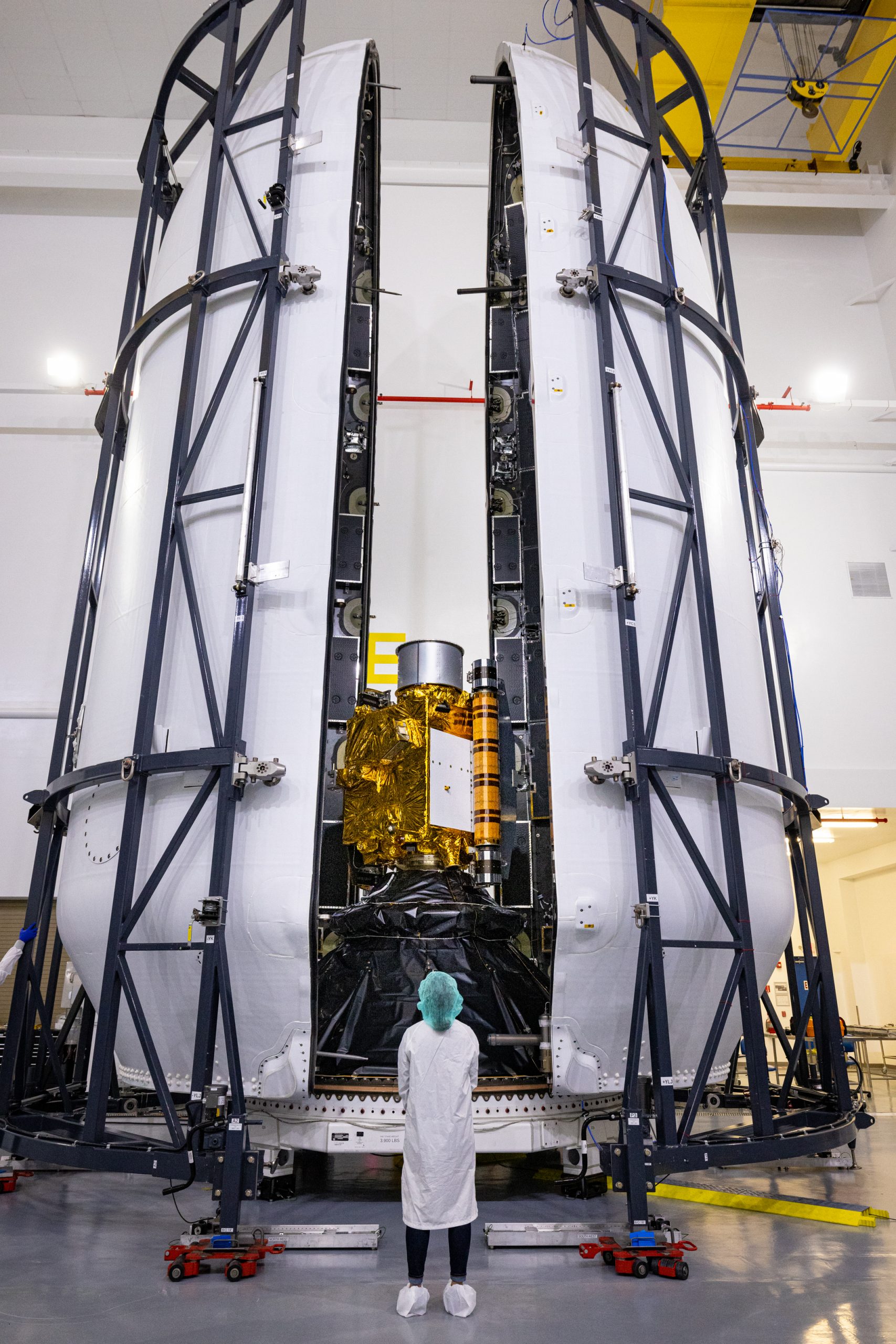
NASA’s Double Asteroid Redirection Test (DART) spacecraft is now encapsulated in the SpaceX payload fairings. Technicians with SpaceX installed the two halves of the fairing around the spacecraft over the course of two days, Nov. 16 and 17, inside the SpaceX Payload Processing Facility at Vandenberg Space Force Base in California.
The payload fairing serves as a barrier to the harsh environment of the atmosphere during DART’s launch and ascent atop the SpaceX Falcon 9 rocket.
“The encapsulation event is a significant milestone in DART’s launch process as it marks the last direct access to the spacecraft and completion of all major testing milestones prior to launch,” said Joan Misner, NASA’s Launch Service Program integration engineer. “The team has worked around the clock to ensure they wouldn’t miss a thing.”
On Nov. 17, NASA’s Launch Services Program (LSP), SpaceX, and DART launch managers completed a Flight Readiness Review (FRR) at Vandenberg. The purpose of the FRR is to update the team on the status of the mission, close out actions from previous readiness reviews, and certify the readiness to proceed with initiation of final launch preparation activities.
DART is scheduled to launch from Vandenberg on Nov. 23 at 10:21 p.m. PST (Nov. 24 at 1:21 a.m. EST). DART is the first mission to test technologies for preventing an impact of Earth by a hazardous asteroid. DART’s target asteroid is not a threat to Earth. LSP, based at Kennedy Space Center in Florida, America’s multi-user spaceport, is managing the launch.
The Johns Hopkins Applied Physics Laboratory has been directed to manage the DART mission for NASA’s Planetary Defense Coordination Office as a project of the agency’s Planetary Missions Program Office. NASA provides support for the mission from several centers, including the Jet Propulsion Laboratory in Southern California, Goddard Space Flight Center in Greenbelt, Maryland, Johnson Space Center in Houston, Glenn Research Center in Cleveland, and Langley Research Center in Hampton, Virginia.
